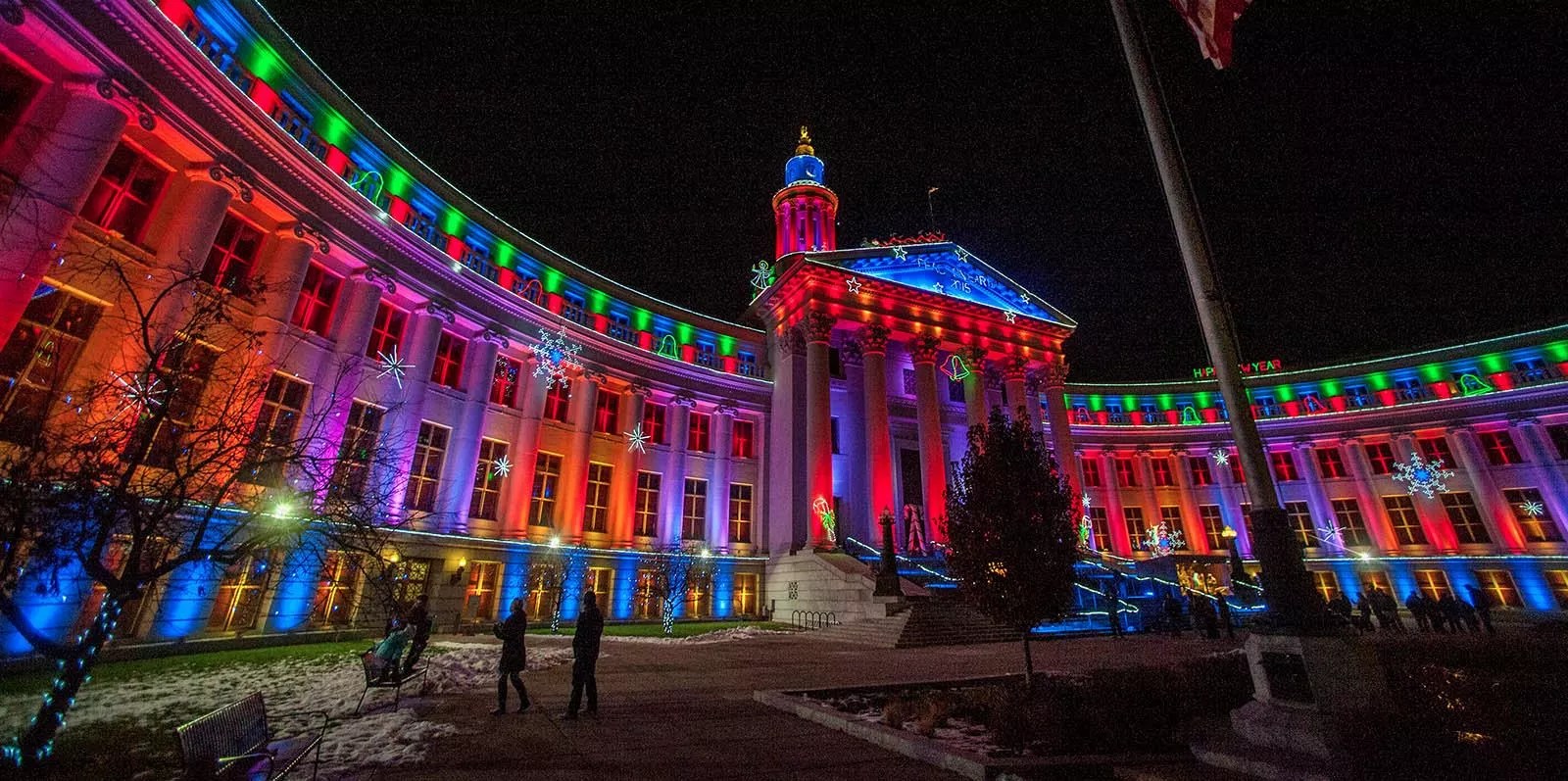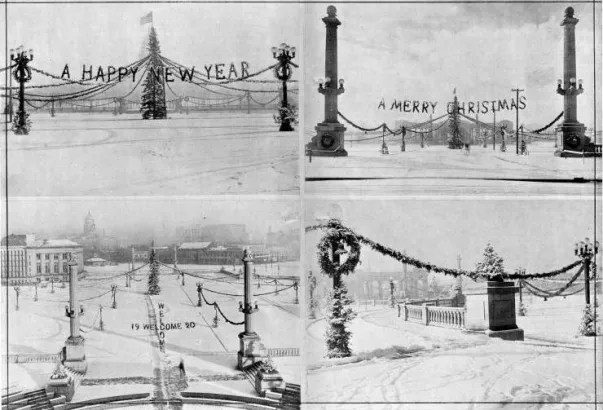
Downtown Denver

Audio By Carbonatix
On Christmas Eve 1914, ten-year-old David Jonathan Sturgeon was in bed at his home at 4408 West 34th Avenue, too sick to join his family around the Christmas tree. David Dwight “D.D.” Sturgeon, a pioneering Denver electrician, decided to cheer up his son, so he dipped lightbulbs in red and green paint, connected them to electrical wire, and hung them in a pine tree outside David’s window, brightening his holiday and inspiring people from miles away to come marvel at the sight of the illuminated tree.
Although there had been a few earlier outdoor decorating attempts around the country, they dimmed when compared to the glowing reports of the Sturgeon display provided by Denver Post reporter Pinky Wayne, and enthusiastic city boosters of a century ago were soon touting this as the first illuminated outdoor Christmas tree. The next year, Sturgeon neighbors decorated their trees, too, and the tradition kept growing, and glowing. (Sadly, young David did not live on; he succumbed to a different illness.)
Denver was soon in the spotlight of a national craze. D.D. Sturgeon was dubbed the “Father of Yule Lighting,” and Wayne organized the country’s first outdoor-lighting contest, attracting hundreds of contestants in the Mile High City. Her efforts inspired manufacturers to come up with affordable products that would work indoors and outdoors regardless of the weather.
By 1919, the official city electrician, John Malpiede, had caught the fever and replaced the lights in the new Civic Center Park with colored globes of red and green for the holidays. The next year, he put an illuminated Christmas tree in front of the State Capitol. “Six years ago,” Wayne reported in 1926, “when The Post sponsored a program of outdoor Christmas lighting to link Denver with a joyous expression of Christmas cheer and good will, we little thought it would reach such dimensions. … In 1925, Denver won the title as the Christmas City of the World.”
Denver, make your New Year’s Resolution Count!
We’re $17,500 away from our End-of-Year campaign goal, with just a five days left! We’re ready to deliver — but we need the resources to do it right. If Westword matters to you, please contribute today to help us expand our current events coverage when it’s needed most.

Civic Center Park in 1920.
Denver Public Library
Malpiede’s annual creations for the “Christmas City of the World” became even more ambitious as Denver built the neo-classical Denver City and County Building, completed in 1932, and the display grew to include seventeen miles of electrical wiring and 25,000 bulbs. In 1945, NBC broadcast a tribute to Denver and the Sturgeon family for having created a beautiful holiday tradition.
Beautiful, and increasingly garish. After Quigg Newton took over as mayor in 1947, he brought in an outside artist to redesign the holiday display with a more modern look, creating a huge uproar in the process. “He discovered that Denverites like things that are garish and tasteless,” historian Tom Noel pointed out in 2014. So Malpiede was brought back the next year, and continued lighting up the city until he retired in 1956.
Denver residents continued to embrace the tradition he’d started, and fifty years later showed they were no more amenable to change. New Denver mayor John Hickenlooper learned that the hard way in 2004, when he suggested replacing the “Merry Christmas” sign at the top of the City and County Building with the more inclusive “Happy Holidays” – which made sense not just because Denver is home to more than Christians, but also because the lighting display glows from the day before Thanksgiving through Christmas and into late January, as a cheerful, if over-the-top, welcome for visitors to the National Western Stock Show.
But Hickenlooper was quickly persuaded to leave the sign alone. “Over the past several days, it has become clear to me that there is strong community sentiment to maintain the ‘Merry Christmas’ sign, and I am glad to oblige,” he said at the time. “My intention was never to disrespect or slight anyone or any religious tradition. I apologize to anyone who may have been offended or mistakenly felt I was being anti-Christmas. ‘Hickenlooper’ might have two Os, but I am not Scrooge. We are happy to keep the ‘Merry Christmas’ sign.”
There have been some successful changes over the years, though. During the cash-strapped ’80s, the budget-busted city was going to dispense with the display, until the Keep the Lights Foundation came through with enough cash to leave the lights on. (Sturgeon Electric Company, the business that D.D. Sturgeon founded in 1912, has never been in the holiday-lighting business itself, but it contributed to that campaign; today it’s a large industrial-construction company responsible for a lot of the power lines across the country. Although it’s now a subsidiary of a holding company, it continues to be based in Colorado, in Henderson.)
The Denver City and County Building display is now safely back in the city budget, and all of those bulbs have been replaced with LED lights that are not only more energy-efficient (they use only a third of the energy of previous years), but allow for the colors to be changed with the flick of a switch – creating those celebrations of pink, purple, red and, of course, orange-and-blue causes through the year.
And even though the city’s website notes that “Civic Center Park will be closed this season for renovations” — a mild way of describing the $50 million project that will make most of the park off-limits through Colorado’s 150th anniversary celebration next year (talk about Scrooge!) — and many of the traditional holiday activities usually held in the park are moving to the Auraria Campus, City Hall will again be aglow from now through January 26, 2026. when the National Western Stock Show rolls out of town.
Let there be lights!
For now, let there be light. This column has been updated from the original published in 2014.